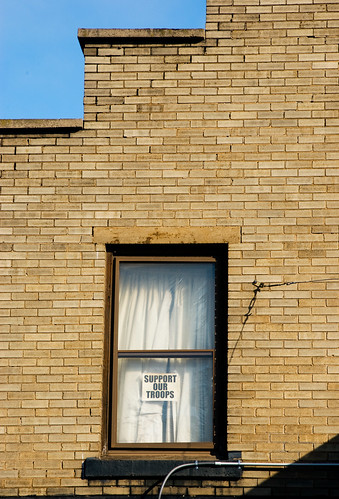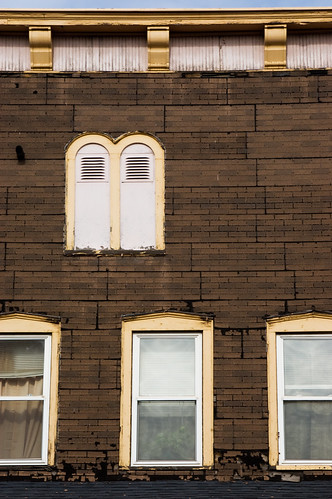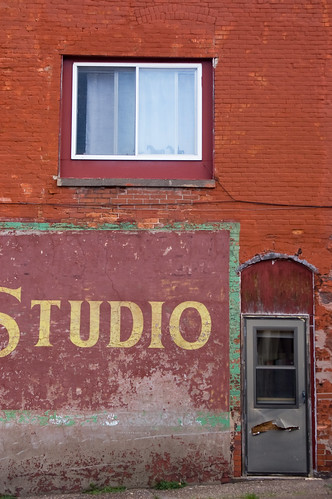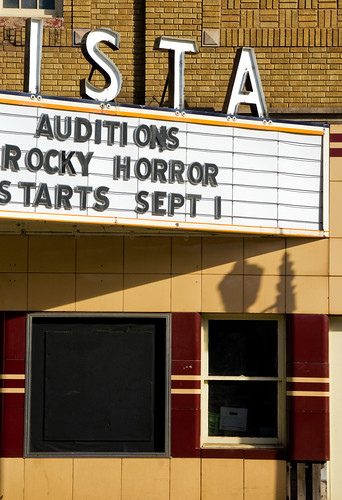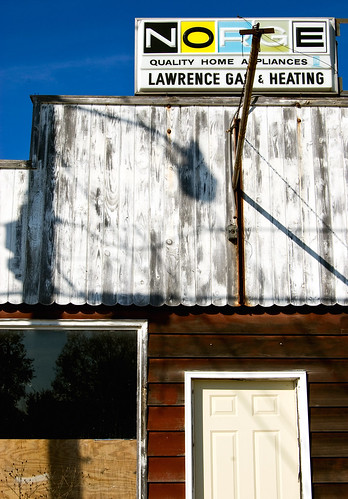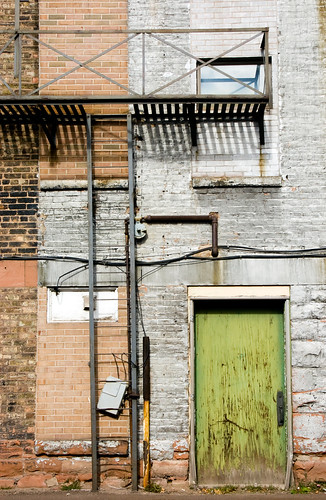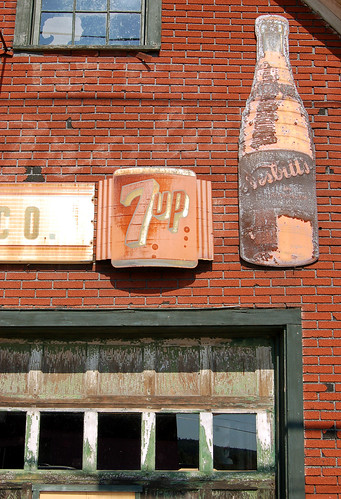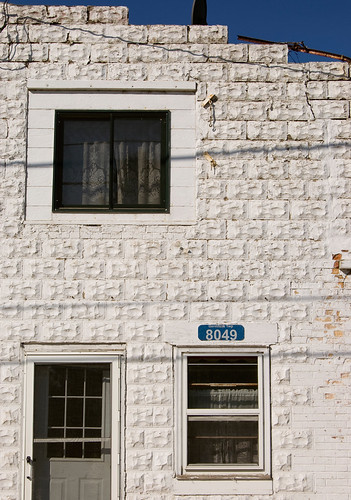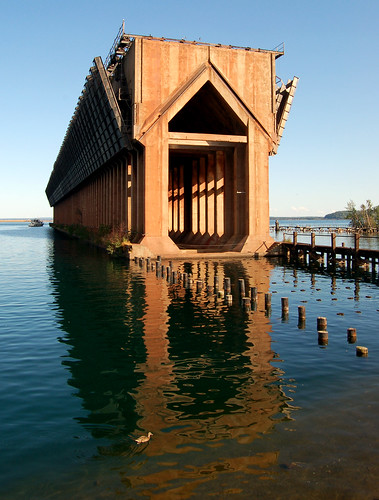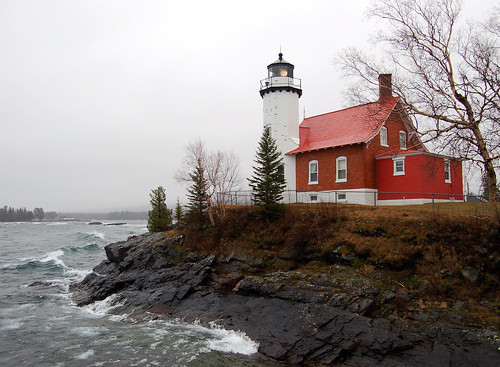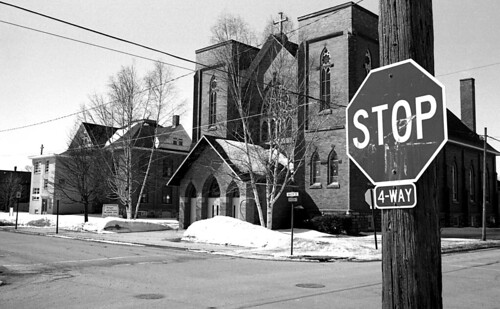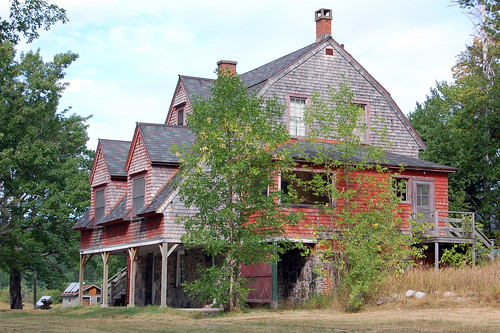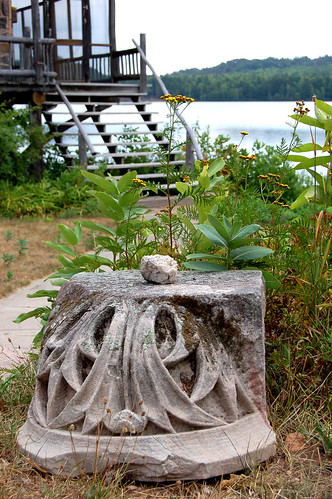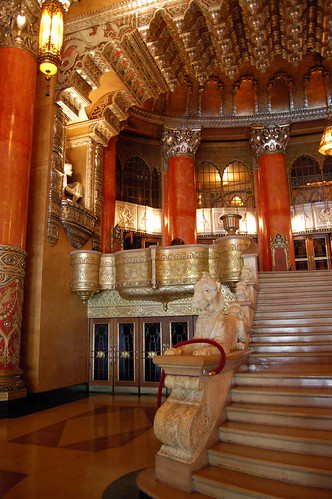A few weekends ago, I visited Ironwood with my roommate and suitemates. It was the first time I've been to that part of the state, and I can assure you, it's absolutely beautiful. On the way there, the fall colors were at their peak (though they have not gotten there yet here in Marquette) and the trees were simply gorgeous. The main reason I wanted to go to Ironwood was to photograph the historic Ironwood Theatre -- the very last Michigan theater left for me to see! There were other architectural treats to be seen, as well.
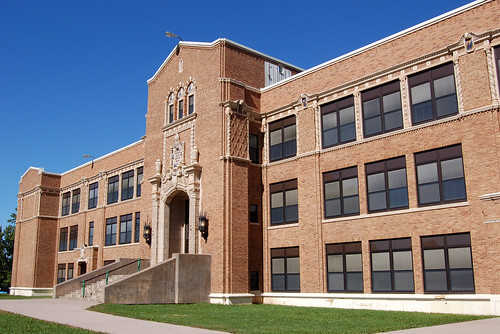
The Luther L. Wright High School, built in 1924.
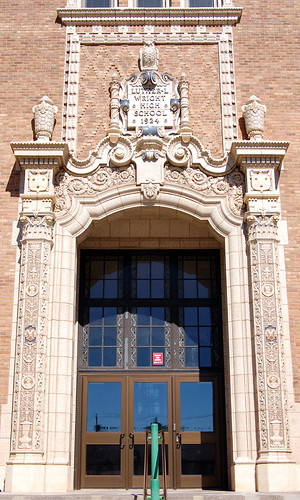
The high school has some fantastic exterior details surrounding its front door and windows! Of course, my friends thought I was an über-geek, photographing the building, but... Really, if my high school had looked this awesome, it would have made the experience that much better.
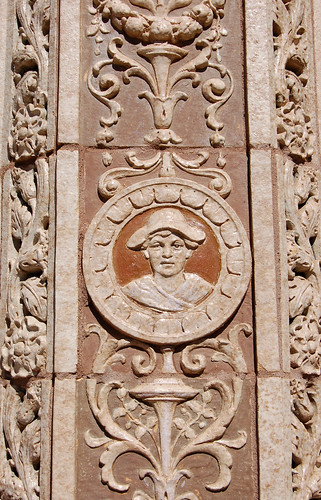
A detail on the terra cotta embellishments that surround the school's main entrance.
Now, moving on to Ironwood's beautiful main-street cinema:

Here's the Ironwood Theatre, the last on my list of historic movie theaters to photograph! It was well worth the wait, the 3.5-hour drive, and the
pouring rain along the way. I couldn't get inside the theater, unfortunately, but I hear it carries a classical theme with murals that depict gryphons and other mythical creatures.
According to
WaterWinterWonderland.com, the Ironwood Theatre was built in 1928, designed as a silent movie and vaudeville palace. The architect was Albert Nelson, and the cost of the building was $160,000.
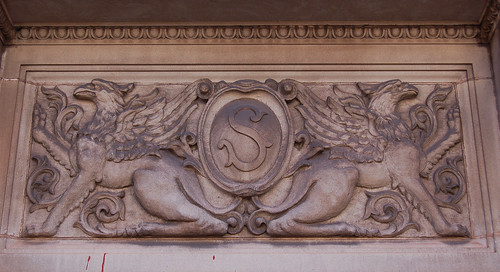
Gryphons atop a side door on the Ironwood Theatre.
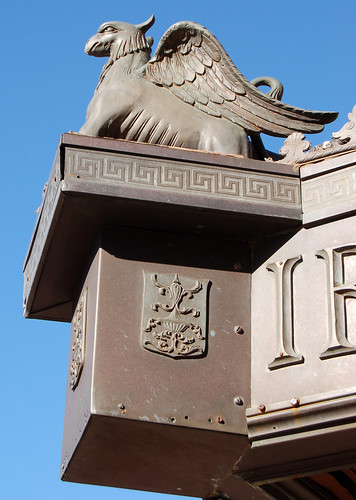
Gryphons adorn the theater's marquee, as well.
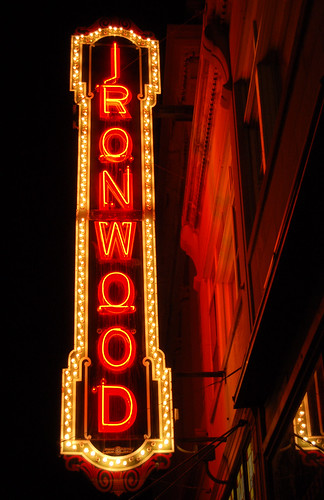
Lastly, the Ironwood Theatre's marquee, lit up for a night performance! It was wonderful to see the neon and the light bulbs flashing.
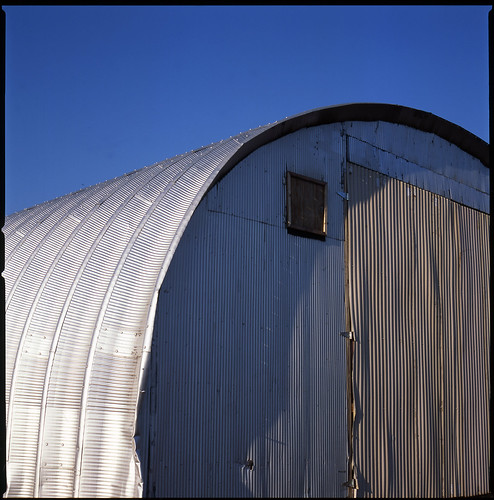
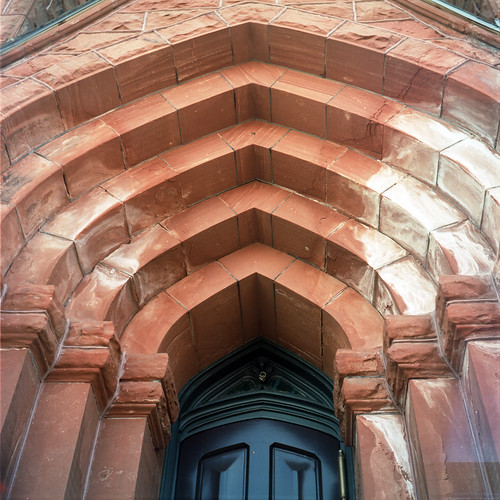
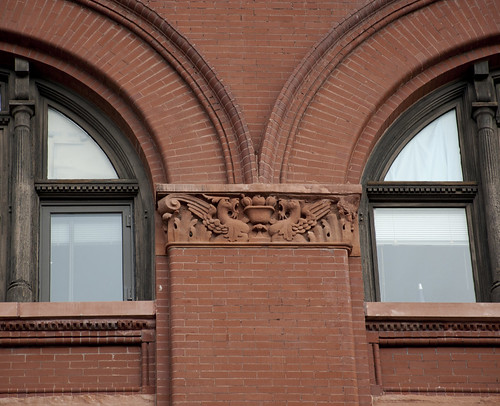

 The first thing that caught my eye was the awesome, stylized type on the left side of the building.
The first thing that caught my eye was the awesome, stylized type on the left side of the building. The exterior looked to be in beautiful shape. So beautiful, in fact, that the gold detailing above the doorway was glistening in the sun.
The exterior looked to be in beautiful shape. So beautiful, in fact, that the gold detailing above the doorway was glistening in the sun.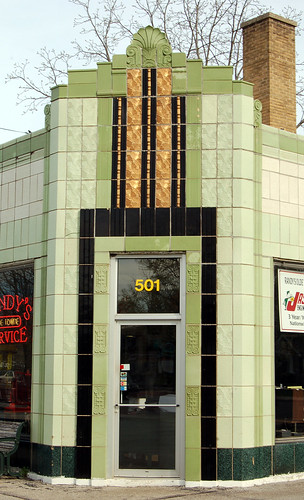 This, of course, brings me back to the sad state of present-day architecture designed for buildings of utilitarian purposes, such as service stations. You aren't going to see a service station built this extravagantly -- ever again. Chances are these days, you won't see a new furniture store, car dealership, or even a bank designed so intricately. It's very telling, and we can all draw our own conclusions as to why, as a culture, we've turned into what we are today -- homogenous.
This, of course, brings me back to the sad state of present-day architecture designed for buildings of utilitarian purposes, such as service stations. You aren't going to see a service station built this extravagantly -- ever again. Chances are these days, you won't see a new furniture store, car dealership, or even a bank designed so intricately. It's very telling, and we can all draw our own conclusions as to why, as a culture, we've turned into what we are today -- homogenous.